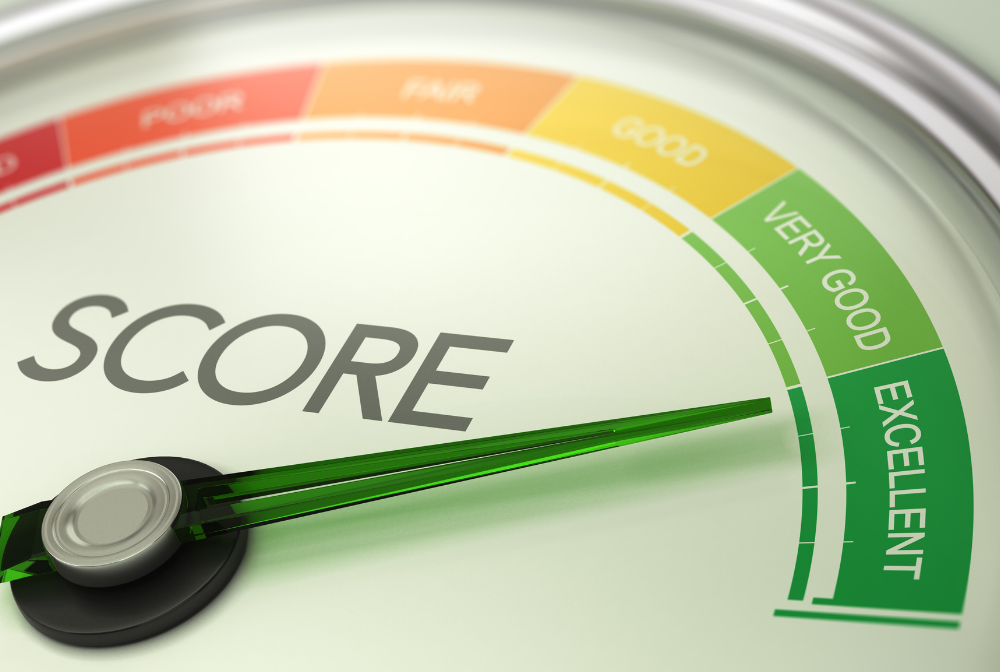Top 12 Questions We Get Asked About Equifax One Score
Equifax's next-generation credit score has generated considerable interest for its ability to yield more predictive insight than our previous scores. Its step-up in predictive power and functionality makes Equifax One Score a powerful consumer credit risk analysis tool.
Developed using innovative analytic techniques and incorporating recent data sets, our new score can facilitate better business outcomes for lenders across the customer credit lifecycle from financial literacy through to pre-screening, pre-qualification, origination decisions, account management and early collections.
Discover the most common questions asked about Equifax One Score.

Q1: Why has Equifax released a new credit score?
We developed Equifax One Score to provide our customers with a strong performing score that captures recent shifts in Australia's data reporting and consumer credit behaviours. In the time since the comprehensive scores were developed, much has changed; Comprehensive Credit Reporting (CCR) has rolled out and reached critical mass, the Australian consumer credit landscape has changed moving away from Credit Cards in favour of Buy Now Pay Later products and a global pandemic has left missing Repayment History Information (RHI) that will affect credit files for months or years to come.
Our next-generation score combines extensive Comprehensive Credit Reporting data and up to 2 years of Repayment History Information (RHI) with market-leading negative data coverage (enquiries, defaults and public record data). To further enhance predictiveness, it draws on alternative data sources including Buy Now Pay Later (BNPL) and geodemographic data sets where required.
At the same time, our patent of a new machine learning model called NeuroDecisionTM Technology (NDT) has made it possible to produce a genuinely unique credit risk model. Not only is our model highly accurate and stable, but it can also generate individual actionable reason codes. The transparency of the model will help lenders, consumers and brokers make risk decisions that are informed and explainable.
Q2: How does Equifax One Score manage recent CCR data limitations?
To cope with CCR data limitations due to COVID-19 payment deferrals, Equifax One Score was built using both recent and longer-term RHI and up to five years of credit enquiry and defaults trends. So rather than being sensitive to any single data point that may be missing or not useful, our new model bases its risk assessment on a broad range of data and the length of time information has been in the credit file.
Thanks to our adoption of groundbreaking machine learning analytical techniques, we can now extract value from a broad range of data residing in different sources. We can reach wider and deeper than ever before to analyse multiple complex interactions between variables.
Equifax One Score was stress-tested under COVID-19 simulation conditions and found to exhibit a Gini drop of only 0.9% compared to 1.6% for our previous generation score. This result demonstrates its superiority in helping lenders make more precise lending decisions, using models that remain stable through COVID-19 payment deferrals.
Useful reading: Closing the Gap on Missing Repayment History Behaviour
Q3: What is a Gini?
A Gini or Gini coefficient is a standard metric for evaluating credit score model performance. It measures the relationship between the model's forecast and the outcome. The Gini is a value between 0 and 100% and the larger the Gini, the more effective the model is at its prediction. Application scorecards typically have Ginis of 40 to 60%, Equifax One Score has a Gini of 70.8%.
This represents a Gini uplift of 4.6% when compared to our previous generation score. This metric suggests that our new model is better at predicting which borrowers will default in the future and which won't. The analysis found that for credit card lenders, this predictive power improvement climbed to 8.4%; for personal loans 9.5%; for residential mortgage portfolios 9.3%; and for auto portfolios 6.5%.
Q4: What does it mean that Equifax One Score is more predictive?
The increased power of Equifax One Score compared to previous generation Equifax scores means that it is more accurate in its prediction of arrears and defaults.
Using our new score, we estimate that a lender could lower the number of defaults in their personal loan portfolio by up to 19% (based on an acceptance rate of 70%). Similarly, the personal loan approval pool (the percentage of loan applications above the bureau score cut-off) could rise by up to 8.3% while maintaining the same default rate. In other words, a 65% increase in the approval rate for the same risk.
This improved predictability affords lenders the possibility of reducing their default rates or increasing their approval rates without increasing their risk. It's an impressive uplift made possible by several innovations in the scoring design, including:
- the removal of the point-in-time credit enquiry
- the inclusion of new data sources that increase signals of credit risk
- reduced reliance on recent default and CCR data compromised by the COVID-19 pandemic
- innovative techniques that extract more value from data.
Equifax One Score will give lenders the constancy and confidence to extend credit responsibly and innovate for competitive advantage as we look ahead to a changing landscape. For consumers, it will expand the opportunities for access to credit and provide a tool to help manage their financial wellbeing.
Useful reading: Predicting the Probability of Default Just Got Easier
1 This analysis does not consider lender policies or other underwriting criteria and uses the bureau scores as the sole criteria in loan approval for this comparison. The default rates are defined as any account that reaches 90 days past due or worse within 12 months after the date of the loan application being scored.
Q5: Does Equifax One Score include Buy Now Pay Later data?
Yes, our next-generation score leverages BNPL enquiries and defaults held. As Equifax has the most contributors to BNPL data than any other credit bureau, we have substantially built our intelligence about what this profile looks like and how it relates to credit risk.
With consumers moving away from traditional credit products towards BNPL services, our new score's predictive power will help lenders make meaningful gains in this rapidly growing market segment.
Useful reading: Credit Scoring with Alternative Data: The Way Forward
Q6: What data does Equifax One Score tap into?
In Equifax One Score, the latest CCR data augments our extensive repositories of negative events and enquiry data. Equifax is the market leader in consumer credit information, holding the most extensive data collection, including CCR data and BNPL data, than any other Australian credit bureau. In certain circumstances, such as thin files, geo-demographic data has been used as an additional data set, providing the opportunity to form inferences about credit behaviour according to where a consumer lives.
The future rollout of open banking brings many new alternative sets that can add another layer of information to existing credit reporting. Beyond Equifax One Score's release, we will continue to develop score overlays and new generation scores that incorporate CCR data and additional demographic and utility data. We are currently building a predictive model prototype based on transaction data, for example, that searches for previously unrecognised positive and negative correlations in income and expense data.
Q7: Will Equifax One Score be a single consistent score between lenders and consumers?
Yes, the score is common to lenders and consumers but also to brokers, comparison sites and eventually financial literacy portals through lenders websites. When lenders who have adopted Equifax One Score assess an applicant, they will see the same score that the applicant sees if they were to retrieve their credit score online.
Equifax One Score dynamically updates as credit-related information becomes available, both positive and negative. Its reduced dependence on the current (or incoming) enquiry has removed the disjoint that exists between consumer and lender scores. The more widely used the score becomes, the more effective it will be as a tool of financial inclusion. Consumers will have a greater incentive to manage credit responsibly because they will see how their credit behaviour influences the score outcome. This greater demand for financial services will increase opportunities for lenders to boost their market share.
Useful reading: Equifax One Score – Why It May Help Lenders Approve More Loans
Q8: Is it true that Equifax One Score reason codes are personalised to each consumer?
It's true. We know how vital it is to explain to your applicants why their credit application was accepted or denied. Equifax One Score uses an explainable AI (xAI) modelling technique known as NeuroDecisionTM Technology (NDT) to enable greater accuracy and transparency around how decisions are made. Unlike other xAI methods that rely on proxy or 'average' explanations, the explanations (reason codes) provided by Equifax One Score are logical and actionable for individual consumers.
Useful reading: Explainable AI for Credit Scoring
Q9: What safeguards are made against bias in Equifax One Score?
As part of our ongoing mission to ensure fair outcomes in credit scoring, we have worked hard to ensure the algorithms and processes behind Equifax One Score guard against bias and discrimination. A best practice approach has been taken to incorporating new data sets, including the use of de-identified data, restrictions on data collection and the adoption of privacy governance. Rigorous testing to prove that no identifiable groups are unfairly represented in this new generation of credit score.
Q10: Can Equifax One Score be useful for thin files?
Absolutely. Because Equifax One Score uses alternative data, it can achieve a better risk separation among thin-file applicants. Recent model analysis, for example, shows an increase in Equifax One Score's predictive performance of 100% for the new-to-bureau segment. When limited credit information exists, current enquiry data and non-traditional sources like geodemographic characteristics are used as supplements to the score.
With substantial investment in data matching and linking technology, we can now more accurately identify and link customer information regardless of address changes, name changes or name variations. Even from disconnected and multi-sourced data, we can quickly and accurately connect similar and dissimilar records to round out information about a thin file applicant.
Q11: Why adjust score cut-offs when adopting Equifax One Score?
We always recommend a review and adjustment of cut-off strategies whenever a new credit score is deployed. As Equifax One Score delivers a higher level of predictiveness than our previous generation scores, it's particularly beneficial to ensure cut-off and risk continue to align.
When implementing the new scorecard, it's important to consider that Equifax One Score average scores are slightly lower than Equifax Apply average scores. Lenders can use this opportunity to adjust cut-offs to accept more loans at the same risk level. Conversely, lenders may prefer to change cut-offs to acquire the same number of loans but reduce the bad debt associated with these loans. Either way, you will want to get optimal value out of the score's improved ability to separate good from bad borrowers.
Our team can work with you to test equivalent cut-offs depending on your risk preference.
Q12: Why are the average scores of Equifax One Score lower for some people?
Equifax One Score uses a more granular and broader set of credit information and is able to use this information more effectively to generate more accurate scores in relation to predicting credit risk (someone not paying back a loan in the future). As a result, some individuals will get a better score, some will remain on a similar score and some will get a lower score when compared to the previous generation of scores.
As the new Equifax score is more effective and accurately using credit data, consumers will have a greater chance of improving their score with good repayment behaviours and appropriate use of credit facilities. Similarly, where consumers are not able to pay credit obligations on time and move into arrears, the scores will be lower in general compared to past generations of scores.
How to start using Equifax One Score
Switching to our next-generation score is quick and easy. You can access it right now through your web portal, IQ Connect, or systems channel API Connect:
- Via IQConnect – contact your account manager, who will update IQConnect to enable all Equifax Apply reports to show Equifax One Score along with the Equifax Apply score.
- Via API Connect – go into your credit enquiry header request and add the Equifax One Score as one of your Scorecard IDs. Also available now in the test environment.
Not ready to switch but interested in seeing how Equifax One Score performs? Before you include it in your decision matrix, the new score can run parallel with Equifax Apply or whichever previous generation score you're using. You can produce reports and see the differences between the scores.
Our team provides a complementary score comparison service that includes average score correlations, cumulative gains and bad rates by decile for your portfolio(s). We can simulate head-to-head comparisons of the score you're currently using and Equifax One Score.
If you have a question not included here or for details about Equifax One Score's pricing structure, email a One Score Sales Specialist.


